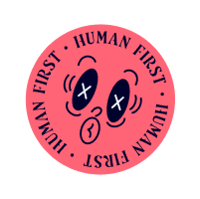

Is there enough information related to your product or service about its uses and benefits? How quickly can you move from sales to implementation? How do you handle situations where your service did not meet your customer's expectations?
Service design is a user-centered way to design services and products so that they take into account the needs of the customer or user as comprehensively as possible. To implement service design, all your company's functions from sales to marketing and production are harnessed.
Even traditionally backstage support functions are set to consider how their internal processes could be modified to better serve customers or users. For example, how could your IT support services take into account your customers? Or is the order of your premises designed the way the customer would like to see it?
Your customer gets a better experience of your company when you switch from a product-centric thinking model to a service-centric one and consider your customer in all your company's operations. The benefit is achieved through increased customer understanding and meaningful work. Your employees serve the customer more and your customers get more comprehensive service, which leads to better results over time. When participating in the development of the service model, employees feel they are working to achieve a common good.
Behind a high-quality and successful digital service, there is always a comprehensive and information-based concept. The concept is the first work phase when establishing a new service or application or renewing an old service.
In this work phase, it is defined what is being aimed for, how the goals are achieved with the help of a digital service, the target groups to be served, and the ways in which content and functionality support the achievement of goals. The task of the concept is to connect the digital service to support the strategic goals of the business.
The concept is based on information that we collect through workshops, surveys, and interviews. Based on the background research, we define together with the customer the prerequisites and goals of the digital service.
A thorough background study provides a good basis for concept design. We always aim for a comprehensive understanding of the customer's industry, strategy, and market position. Business is the starting point for concept design, which ensures the making of solutions that support the strategy. The goals and metrics of the project are defined in cooperation with the customer so that success can be monitored and development work can be managed meaningfully.
When the goals have been clarified, the tools to achieve them are considered: what kind of content and functionality is needed for the service. In addition, it is mapped out what we already have at our disposal and who will create the missing content. As part of the content strategy, content structures, forms, and related workflows are also planned.
Information architecture means that the content emerges from the site in a way that supports business goals. Well-structured content also ensures the naming of content so that they are familiar and recognizable to users. On this basis, navigation is built, which makes the offer and services easily accessible to the end customer.
Prototypes ensure that the planned solution is functional and serves its purpose. Prototypes demonstrate the service transparently and enable the design to proceed agilely. Good service design also utilizes user testing to ensure the best possible whole.
Interested in service design and conceptualization? Want to hear more about Crasman's design services?
Copyright @2025 Crasman